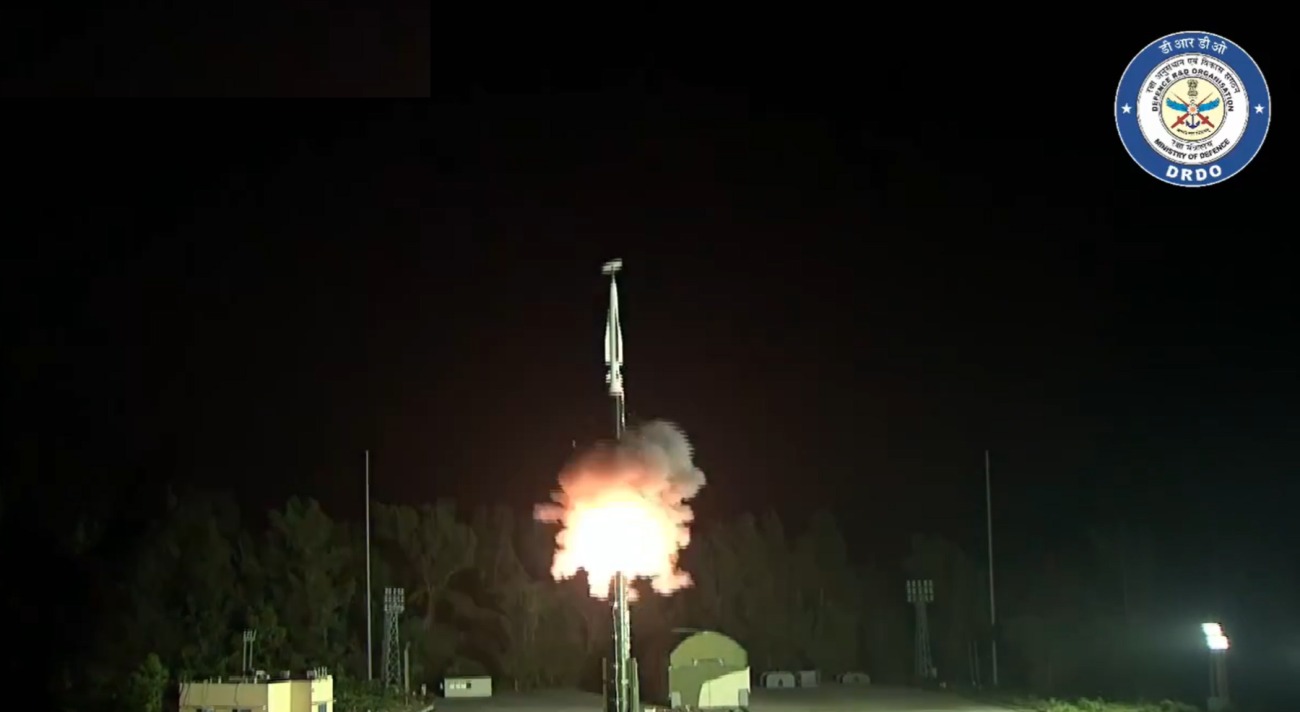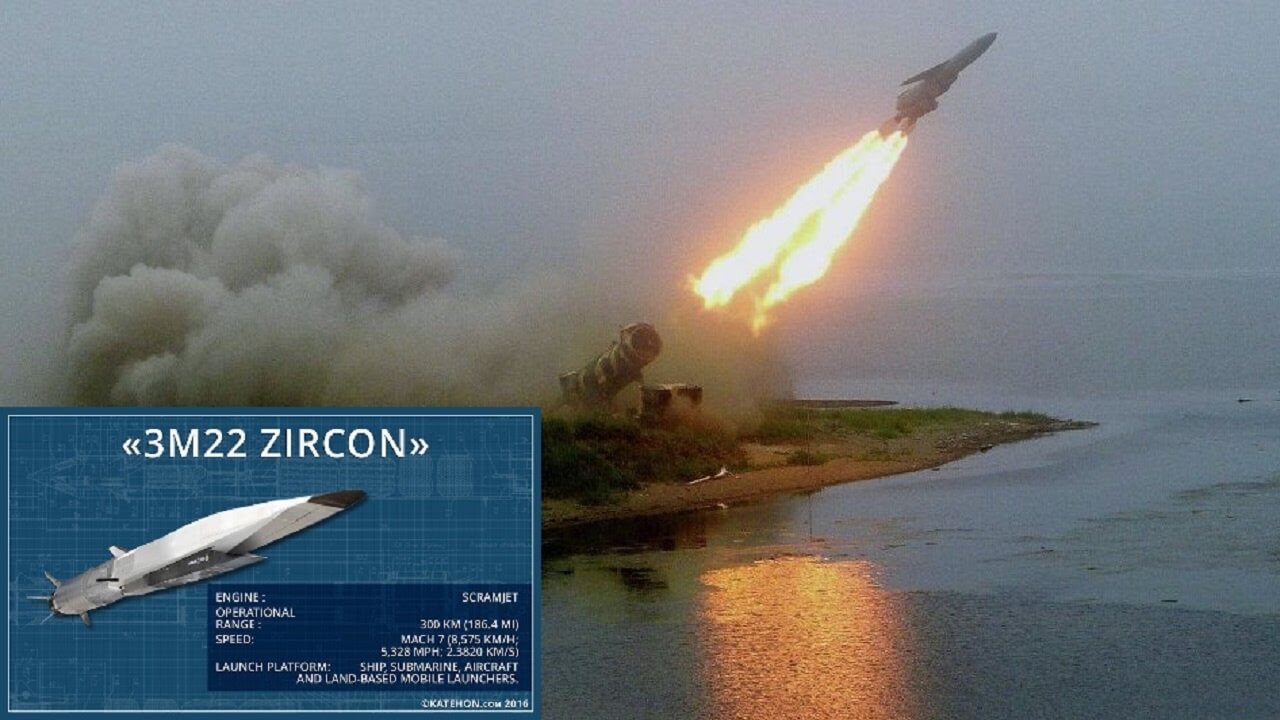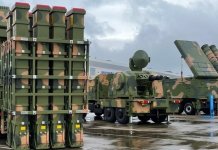Defence Research and Development Organisation (DRDO) conducted a successful flight trial of India’s first long-range hypersonic missile (LR-HM) from Dr APJ Abdul Kalam Island off the coast of Odisha late on November 16, 2024.
According to the PIB press release announcing the test, the hypersonic missile is designed to carry various payloads for ranges greater than 1,500 km for the Armed Forces.
The flight data obtained from downrange ship stations confirmed the successful terminal maneuvers and impact with a high degree of accuracy.
What exactly is the new missile capable of?
Missile Launch Video Analysis
The missile was cold-launched from a hermetically sealed container placed on the ground at night. When operationally deployed, it’s likely that the missile would be launched from containers on wheeled or tracked Transporter Erector Launchers (TEL).
As it emerged from the container, the missile appeared to use its attitude control thrusters twice before the first-stage solid rocket motor ignited.
The missile changed trajectory from vertical to horizontal in around 6 seconds, starting at 8 seconds from liftoff. The early switch to horizontal trajectory suggests that the missile is designed to fly through the atmosphere for the entire duration of its flight.
The physical shape of the missile suggests that it comprises two solid propellant rocket stages.
The first stage is the booster stage. The second stage is the hypersonic sustainer, featuring cruciform, short span, and long chord aerodynamic surfaces mid-body and four short triangular fins aft body.
The mid-body aerodynamic surfaces likely provide lift, flightpath control, and maneuver capability, while the fins provide flight stability. At high speeds, the cruciform design can reduce drag compared to other configurations like planar wings.

Hypersonic Technology Development Vehicle (HSTDV)
The missile tested on November 16 is distinct from the missile used to successfully test the Hypersonic Technology Development Vehicle (HSTDV) on September 7, 2020.
For that test, the hypersonic demonstrator cruise vehicle (CV) was mounted on a rocket Launch Vehicle (LV), protected by airframe fairings. The LV lofted the CV to an altitude of 30-35 km and accelerated it to a speed of M 6.5.
The CV then separated from the LV, jettisoned its fairings and ignited its kerosene-powered scramjet engine to sustain M 6.5 for 20 seconds.
The HSTDV is a test bed for the development of a Hypersonic Cruise Missile. The project’s goal is to demonstrate autonomous air-breathing sustained flight at hypersonic speed with kerosene fuel. The HSTDV will likely be used to develop the Brahmos-2 and other supersonic missiles.
A follow-up test of the HSTDV was reportedly carried out on January 27, 2023, in the afternoon from the APJ Abdul Kalam Island off the Odisha coast.
A source told the Times of India, “The initial launch and take-off was successful. But there are question marks on the subsequent performance of the scramjet engine of the HSTDV for which the data has to be analyzed in detail.”
However, neither the Defense Ministry nor DRDO officially announced whether the test was successful.
The hypersonic missile tested by DRDO on November 16 is likely a new concept based on proven rocket motors and flight control systems that the DRDO has developed and used on other missiles.
It’s important to note that the PIB press release announcing the November 16 test does not refer to the missile as a cruise missile, does not mention the use of a scramjet engine, and does not link it to the HSTDV in any way. Neither does the X.com post by the Defense Minister – Rajnath Singh.
Indeed, Rajnath Singh, in his post, refers to the test as a “successful flight trial of (the) country’s first long-range hypersonic missile,” implying that an altogether new missile was tested.
The Need For LR-HM
It’s likely that the DRDO is developing the LR-HM based on one of the most important lessons of aerial warfare accruing from Russia’s special military operation (SMO) in Ukraine: A hypersonic missile with terminal phase maneuvering is difficult to engage using existing air defense systems. A hypersonic missile flying a flat (non-ballistic) trajectory at a relatively low altitude cannot be engaged using existing air defense systems. Such missiles are likely to remain invincible for the next few decades.
While Ukrainian forces claim to have occasionally shot down the Kinzhal hypersonic aero ballistic missile, they have admittedly never been able to shoot down Russia’s Zircon hypersonic cruise missile.

Another important lesson from the SMO has been the need for conventional missiles with ranges beyond 500 km, a range typical of a tactical ballistic missile.
Modern air defense systems are effective to the extent that they rule out air superiority for either adversary in a peer-to-peer conflict. Deep strikes into enemy territory can only be carried out using missiles. And for the strikes to be effective, the missiles need to be uninterceptable.
DRDO’s new hypersonic missile appears optimized for qualitative requirements that have emerged from a rare peer-to-peer adversary war. The LR-HM is capable of horizontal flight at hypersonic speed, sharp maneuvers, and a range of 1,500 km.
Flight within the atmosphere and the use of cruciform aerodynamic surfaces likely make the DRDO missile far more maneuverable than contemporary hypersonic missiles such as the Russian Zircon.
The missile’s high speed and low cruise altitude would make radar detection and track too patchy for air defense missile engagement.
Anti-Shipping Role
Besides deep strikes the LR-HM would prove a game changer when deployed in an antishipping role.
The range of the missile, its hypersonic cruise speed, and its maneuverability would allow it to penetrate the air defense cover of a carrier group. The combination of the warhead blast and the kinetic energy from the hypersonic impact of the missile would very likely cripple a supercarrier with a single hit.
China has developed anti-shipping ballistic missiles (ASBMs) such as the DF-21D (Dongfeng-21D) and DF-26 as part of their Anti-Access/Area Denial (A2/AD) strategy.
The missiles’ high terminal speed and terminal phase maneuvering ability makes them difficult to engage. However, their ballistic trajectory allows for early radar detection.
In an anti-shipping role, the LR-HM would be considerably more difficult to intercept than the Chinese ASBMs. Equally important, the missile will evade radar detection if it skirts AWACS detection range.
Conclusion
The DRDO has undoubtedly emerged as one of the foremost missile development agencies in the world.
In the early 1980s, the DRDO embarked on its journey to develop missiles for Indian armed forces by literally copying the Soviet SAM-2 missile, inch by inch.
As a cadet at the Air Force Academy, Dundigal, near Hyderabad, during the final semester of the flying training course, the author witnessed the development of the SAM-2 analog under Project Devil while on a training visit to DRDL Hyderabad.
The DRDO no longer copies foreign missiles. Instead, it creates missiles that other great powers will be forced to copy if they wish to remain great powers.
- Vijainder K Thakur is a retired IAF Jaguar pilot, author, software architect, entrepreneur, and military analyst.
- VIEWS PERSONAL OF THE AUTHOR
- Follow the author @vkthakur




